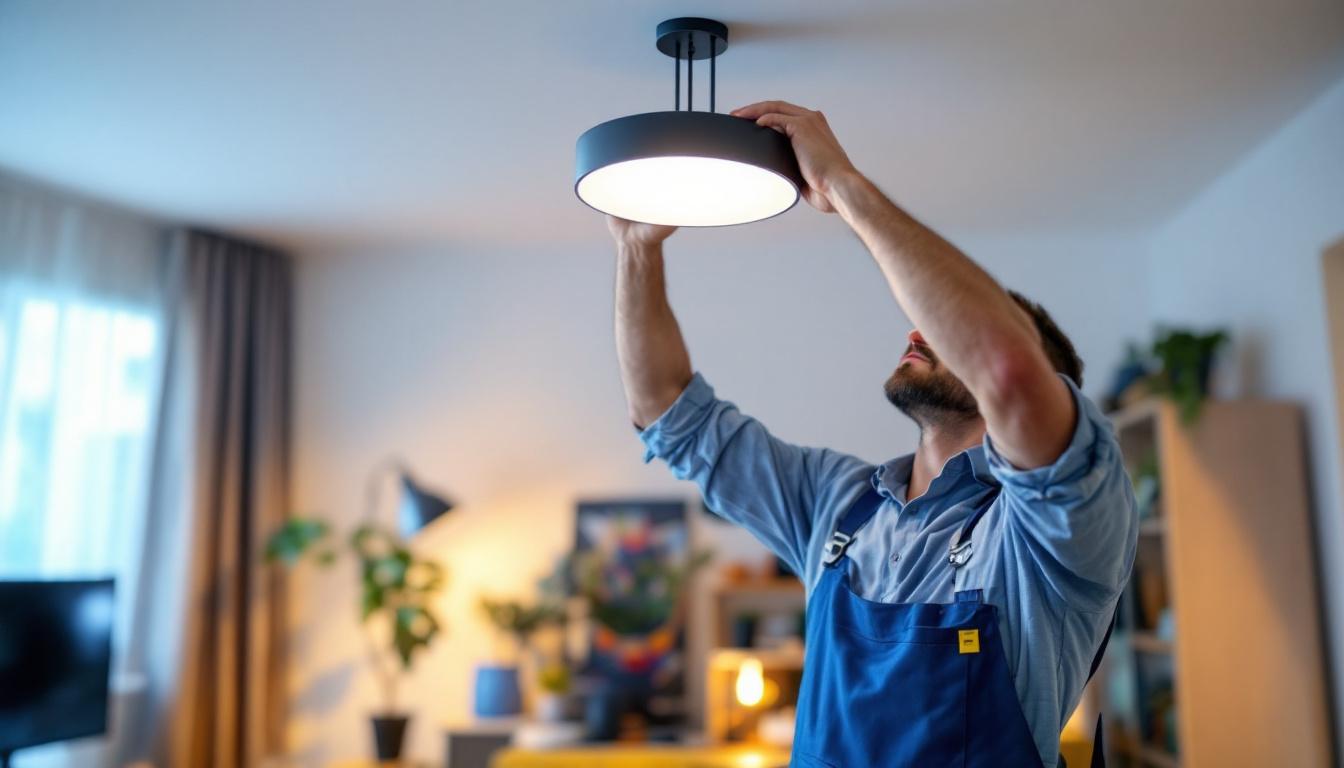
Libraries serve as sanctuaries of knowledge and creativity, offering spaces for reading, studying, and community engagement. The role of lighting in these environments is crucial, as it affects not only the aesthetics of the space but also the functionality and comfort for patrons. For lighting contractors, understanding the unique requirements of library lighting can lead to successful projects that enhance the user experience. This article provides valuable insights and advice tailored specifically for lighting contractors working in library settings.
Before diving into the specifics of lighting design, it is essential to grasp the various spaces within a library. Each area serves a different purpose and requires a tailored approach to lighting.
Reading areas are the heart of any library. They need to be well-lit to facilitate reading without causing eye strain. Natural light is often preferred, but it must be balanced with artificial lighting to maintain a consistent illumination level throughout the day. Consider using adjustable fixtures that allow for flexibility in light intensity depending on the time of day and the weather conditions. Furthermore, the arrangement of furniture in these spaces can also influence lighting effectiveness; for instance, positioning tables near windows can maximize the use of daylight while ensuring that artificial lighting complements it. Incorporating light-colored walls and reflective surfaces can enhance the overall brightness of the space, creating an inviting atmosphere that encourages patrons to linger and immerse themselves in their reading materials.
Study rooms often require focused lighting to help patrons concentrate on their work. Task lighting, such as desk lamps with adjustable brightness, can be beneficial. Additionally, it is important to minimize glare and shadows, which can distract users. The use of dimmable LED fixtures can provide the necessary adaptability for different study needs. Beyond just the lighting fixtures, the color temperature of the light can play a crucial role in productivity; cooler tones are often associated with alertness and focus, making them ideal for study environments. Moreover, acoustic considerations should not be overlooked; sound-absorbing materials can enhance the study experience by creating a quieter atmosphere, allowing users to concentrate better on their tasks without the distraction of background noise.
Many libraries host events and community gatherings, which necessitate a different approach to lighting. These spaces should be versatile, allowing for both bright, energetic lighting during events and softer, more subdued lighting for quieter activities. layered lighting solutions, combining ambient, task, and accent lighting, can create a dynamic environment suitable for various functions. Additionally, incorporating smart lighting systems that can be programmed to adjust automatically based on the time of day or the specific requirements of an event can enhance user experience. Thoughtfully designed lighting can also highlight architectural features or artwork within the community space, adding to the aesthetic appeal and creating a welcoming atmosphere that encourages community engagement and participation in library programs.
The selection of lighting fixtures is a critical aspect of library lighting design. A well-thought-out choice can significantly enhance the overall atmosphere and functionality of the space.
energy efficiency is a top priority in modern lighting design. Libraries often operate for extended hours, making energy costs a significant concern. LED fixtures are a popular choice due to their longevity and low energy consumption. When selecting fixtures, consider those that offer high lumens per watt, ensuring maximum brightness with minimal energy use.
The color temperature of lighting can greatly influence the mood of a library. Warmer temperatures (2700K-3000K) create a cozy and inviting atmosphere, while cooler temperatures (4000K-5000K) can enhance focus and alertness. It is essential to strike a balance that caters to the diverse activities occurring within the library. A combination of different color temperatures can be employed to delineate various areas.
The design of lighting fixtures should complement the architectural style of the library. Sleek, modern fixtures may work well in contemporary spaces, while more traditional designs may be better suited for historic libraries. Additionally, consider fixtures that can be integrated into the overall aesthetic, such as recessed lighting or pendant lights that enhance the visual appeal without overwhelming the space.
A layered lighting approach is essential for creating a well-lit library environment. This technique involves combining various types of lighting to achieve a balanced and functional space.
Ambient lighting provides the general illumination needed for the entire library. This can be achieved through ceiling-mounted fixtures, wall sconces, or even natural light from windows. The goal is to create a uniform light level that allows patrons to navigate the space comfortably.
Task lighting is crucial in areas where specific activities take place, such as reading and studying. Desk lamps, floor lamps, and adjustable fixtures can provide targeted light where it is most needed. It is important to ensure that task lighting is bright enough to reduce eye strain while also being adjustable to accommodate different preferences.
Accent lighting adds visual interest and highlights specific architectural features or collections within the library. This type of lighting can be used to draw attention to artwork, bookshelves, or unique design elements. Track lighting and spotlights are excellent choices for creating dynamic focal points throughout the space.
Lighting contractors often face challenges when designing lighting for libraries. Understanding these challenges and how to address them can lead to more successful projects.
Glare can be a significant issue in library environments, particularly in areas with large windows or shiny surfaces. To mitigate glare, consider using indirect lighting techniques, such as wall washing or uplighting. Additionally, selecting fixtures with diffusers can help soften the light and reduce harsh reflections.
Libraries are dynamic spaces that often change in function and layout. Lighting systems should be designed with flexibility in mind, allowing for easy reconfiguration as needs evolve. Dimmable fixtures, adjustable track lighting, and smart lighting controls can provide the adaptability required to accommodate various activities and events.
Lighting contractors must also be aware of local building codes and regulations regarding lighting in public spaces. Ensuring compliance with accessibility standards, such as the Americans with Disabilities Act (ADA), is essential. This includes providing adequate lighting in pathways, entrances, and areas where patrons may gather.
As technology continues to advance, libraries are increasingly integrating smart lighting solutions into their designs. These innovations can enhance the functionality and efficiency of library lighting systems.
Smart lighting controls allow for greater flexibility and energy savings. These systems can be programmed to adjust lighting levels based on occupancy, time of day, or specific events. For instance, using occupancy sensors can ensure that lights are only on when needed, reducing energy consumption significantly.
Integrating lighting systems with building management systems (BMS) can streamline operations and enhance overall efficiency. This integration allows for centralized control of lighting, HVAC, and other systems, enabling better management of energy use and improving the comfort of library patrons.
Interactive lighting solutions can enhance the user experience in libraries. For example, using color-changing LED fixtures can create different atmospheres for various events or activities. Additionally, incorporating lighting that responds to user input, such as touch or mobile app controls, can engage patrons and make them feel more connected to the space.
Examining successful library lighting projects can provide valuable insights for lighting contractors. These case studies highlight innovative approaches and solutions that have enhanced library environments.
A recent project involved the renovation of a modern urban library that aimed to create an inviting and functional space for the community. The design team implemented a layered lighting approach, incorporating ambient, task, and accent lighting throughout the facility. The use of large windows allowed for abundant natural light, complemented by energy-efficient LED fixtures. The result was a bright, welcoming environment that encouraged patron engagement and exploration.
In contrast, a historic library restoration project focused on preserving the building’s architectural integrity while updating its lighting. The design team carefully selected fixtures that matched the library’s historical style, ensuring that the new lighting complemented the ornate details of the architecture. By incorporating modern LED technology, the library achieved energy efficiency without compromising its classic aesthetic, creating a harmonious blend of old and new.
A community-focused library project prioritized flexibility and adaptability in its design. The lighting scheme included adjustable fixtures and smart controls, allowing staff to easily modify the lighting for different events and activities. This approach not only improved the functionality of the space but also fostered a sense of community by accommodating various user needs and preferences.
Lighting plays a pivotal role in shaping the atmosphere and functionality of library spaces. For lighting contractors, understanding the unique requirements of libraries is essential for successful project outcomes. By focusing on energy efficiency, creating a layered lighting scheme, addressing common challenges, and incorporating technology, contractors can enhance the user experience and contribute to the overall success of library projects.
As libraries continue to evolve, so too will the demands placed on lighting design. Staying informed about the latest trends and innovations in library lighting will enable contractors to provide the best solutions for their clients. Ultimately, the goal is to create inviting, functional, and adaptable spaces that inspire and support the diverse needs of library patrons.
Ready to elevate your library lighting projects to new heights of efficiency and design? At LumenWholesale, we provide lighting contractors with the superior, spec-grade lighting solutions needed to meet the unique demands of any library space. With our unbeatable wholesale prices and commitment to quality, you can trust that you’re getting the best value for your investment. Say goodbye to middleman markups and hello to a vast selection of industry-standard lighting products, all with the convenience of free shipping. Transform your next project with the perfect blend of quality, affordability, and convenience. Discover our extensive range and take advantage of Wholesale Lighting at the Best Value today.

Discover the transformative impact of LED corn light bulbs through real-world success stories from lighting contractors.

Explore how UV disinfectant technology is revolutionizing modern lighting solutions, enhancing safety and hygiene in public and private spaces.

Discover how lighting contractors are transforming spaces with ceiling fans, featuring real-world success stories and practical insights.

Discover how 2 LED fixtures can boost lighting contractors’ success with energy savings, durability, and cost efficiency. Learn key benefits—read now!.